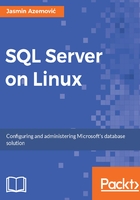
History of SQL/TSQL
During the seventies, the IBM research centre in San Jose, California created a research team named System R based on Edgar F. Codd's article A Relational Model of Data for Large Shared Data Banks. This later evolved into IBM System/38 in August of 1978. In 1986, the language SQL (Structured Query Language), became an ANSI standard and in 1987 it was accepted as an ISO standard. Today, almost 40 years later, SQL is de facto standard when we are talking about retrieving and data processing.
In order to successfully write queries against SQL Server databases, you need to understand the query language T-SQL (Transact-Structured Query Language). T-SQL, and both the ANSI and ISO standard, offers words such as SELECT, INSERT, UPDATE, and DELETE as well as FROM, JOIN, WHERE, GROUP BY, and ORDER BY to understand the syntax and what these words add to build better results when querying the database.
Even if the standards have minimal support for flow control, T-SQL offers additional scripting and batch processing flow control support such as IF...ELSE, WHILE.